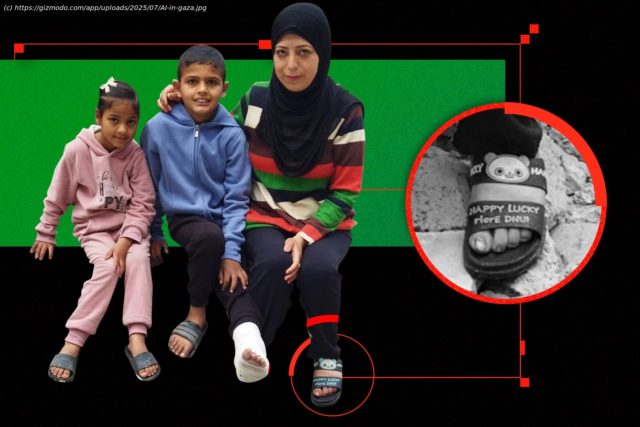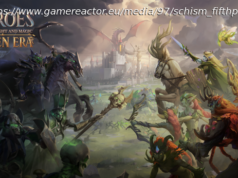Gizmodo spoke with desperate Palestinians who were accused of being AI creations.
Saeed Ismail is a real person. But no matter how much proof he posts online, people keep calling him fake.
The 22-year-old has endured almost two years of war in Gaza, as Israel continues an assault that has killed at least 57,000 people and left the territory of 2 million on the brink of starvation. Saeed has been raising money online to feed his family. But many people on social media have been convinced that he isn’t real at all. They believe he’s an AI-generated creation, used by scammers to get donations through crowdfunding platforms from well-meaning people. And in a world where AI videos and images have flooded our digital spaces, it’s easy to understand why some people are so skeptical.
The controversy started with a photo posted in May that features Saeed asking for help. Users of the social media platform Bluesky started accusing him of being fake. A pseudonymous account called Rev. Howard Arson led the charges against Saeed, pointing out his blanket had some odd words woven within it.
Arson pointed to two words on the blanket: “pealistic” and “spfcation,” which seemed to be misspellings of “realistic” and “specification.” Arson suspected that it was evidence the image was made with AI, a result of someone asking an artificial intelligence tool to make a realistic blanket and spitting this out:
Saeed posted several photos and a video showing the blanket to prove it was real, but that didn’t put the accusations to rest. He told Gizmodo his mother purchased the blanket from a market near where he lived in northern Gaza before the war: “When I left the house during the evacuation, I took it with me.”
People were convinced that AI video has become advanced enough that Saeed could be a completely artificial being—an AI agent, as Arson told Gizmodo over direct messages. Arson, who has over 20,000 followers on Bluesky, was getting a lot of attention for his claims, helping them spread across the relatively niche social network. Saeed didn’t know what he could do, as the account seemed to have more influence than he could ever attain.
“When I went on Bluesky, I saw that many people had started to believe I was a fraud, mainly because of the status of the person who posted about me,” Saeed told Gizmodo over WhatsApp. “He’s seen as a trustworthy figure by many, while unfortunately, I don’t have the same following or credibility.”
Gizmodo verified Saeed’s existence as a real person through a variety of means, including a video call where he walked around the room and showed us the view out of his window. He provided us with his Palestinian ID as well as photos and videos of his location. Saeed told Gizmodo he previously raiseed money on PayPal but now fundraises on GoFundMe through a campaign run by a person he trusts in France who sends him the money. After it gets to France, the money is sent through wire transfers into Gaza, which he says is “reliable and secure,” explaining, “We rely on these channels because we simply have no other options available.”
GoFundMe doesn’t operate in Gaza but allows people in countries where it does operate to host fundraisers for people in other countries. It has a tutorial on its website for how to do that safely. The GoFundMe team collects documentation like IDs, receipts for expenses, and other proof to make sure funds are delivered to the beneficiary. A spokesperson from GoFundMe told Gizmodo it has verified Saeed’s campaign.
“During humanitarian disasters and other crises, our team proactively monitors and verifies fundraisers to help ensure funds raised on our platform are delivered quickly and safely,” a GoFundMe spokesperson told Gizmodo in a statement.
“When a GoFundMe fundraiser is created, we prioritize distributing funds while also helping ensure compliance with relevant international laws, global regulations, and requirements dictated by our payment processors,” the spokesperson continued. “We’re working around the clock to help ensure humanitarian relief funds are delivered safely and quickly to those in need, helping families access essentials, rebuild, and recover through the generosity of their communities.”
Whoever runs the Arson account declined to provide their real name, let alone jump through the same hoops as Saeed to prove his identity to Gizmodo and GoFundMe. “Unfortunately i don’t want a claim i can’t prove connected to my name, which is why—even though i’m very skeptical still—i took down the actual claim and any references directly to the guy in question,” Arson told Gizmodo over Bluesky.
Arson told Gizmodo he’s an American and recognized his country was helping Israel flatten Gaza and kill tens of thousands of people. But he remained unconvinced that Saeed was a real person and seemed frustrated that AI had become so advanced he wasn’t sure what to believe. Arson, who seems to have great familiarity with AI systems, struggles with what to believe, especially when it comes to whether giving money is a good thing.
“I have no idea whatsoever what it is like to be there. i know i would do or say literally anything to eat,” Arson wrote. “But this is why it is absolutely impossible to evaluate whether you are actually doing any good! on one end you have people with money and on the other you have people paying $300 for a bag of lentils in a manufactured and intentional famine.”
Arson acknowledged that his perspective could be warped by seeing so many fake images created with AI.
“The way people get this stuff wrong, and the way I possibly have, is that they end up in a world where half the stuff they look at is synthetic and half of it is real, and presume that 50/50 is the distriubtion [sic] everywhere they look,” Arson told Gizmodo.
Arson pointed to another example of a photo that he previously thought was fake but is actually real. The image shows a woman and two kids sitting in the rubble of Gaza. All three people are wearing sandals, though the boy’s left leg has a white plaster cast.






